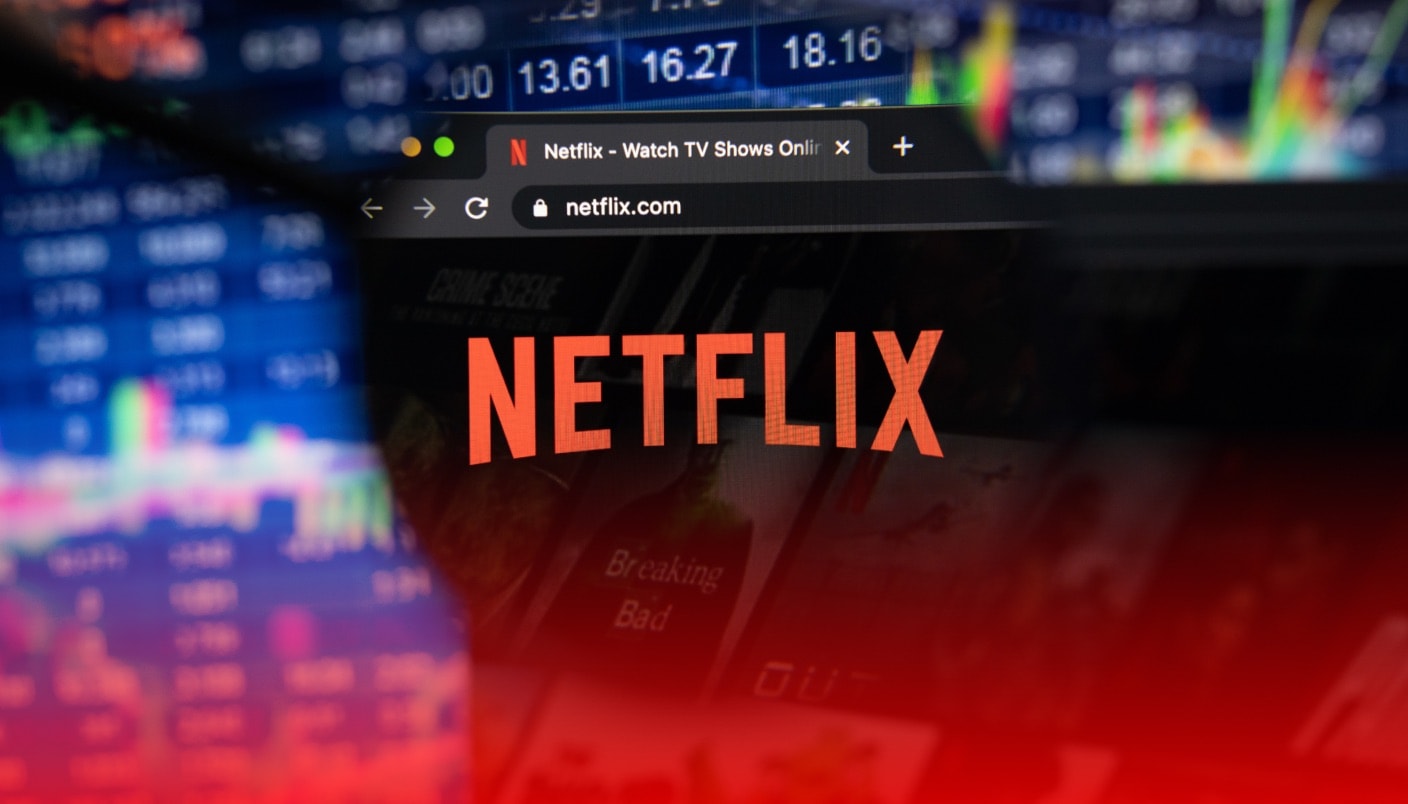Breaking News! 🚨 Top 10 brokers is here! See the most trusted trading platforms of 2024. Go now!
Netflix’s Content Strategy: Implications for Investors
Analyze Netflix's content strategy and its implications for investors. Discover investment insights and recommendations for evaluating Netflix stock.
1 year ago, Jul 03, 9:42 am

The streaming industry has experienced exponential growth over the past decade, with Netflix emerging as a dominant player. Known for its vast library and pioneering approach to content delivery, Netflix has revolutionized how audiences consume media. Central to this revolution is Netflix’s content strategy, which has evolved to focus heavily on original programming. This strategy has significant implications for the company’s subscriber growth, revenue, and competitive positioning within the industry.
For investors, understanding Netflix’s content strategy is crucial for making informed decisions about the stock.
Overview of Netflix’s Content Strategy and Investment in Original Programming
Netflix’s content strategy revolves around two main pillars: extensive investment in original programming and leveraging data-driven insights to cater to diverse audience preferences.
Investment in Original Programming
Since 2013, when Netflix debuted its first original series, “House of Cards,” the company has steadily increased its investment in original content. In 2021 alone, Netflix spent approximately $17 billion on content, a significant portion of which was dedicated to producing original series, films, documentaries, and specials. This investment reflects Netflix’s commitment to differentiating its platform with exclusive, high-quality content that cannot be found elsewhere.
Netflix’s strategy involves producing content across various genres and languages to appeal to a global audience. For example, series like “Stranger Things,” “The Crown,” and “Bridgerton” have achieved international acclaim and attracted millions of viewers worldwide. Additionally, Netflix has expanded its original programming to include non-English content, with hits like “Money Heist” (Spain), “Lupin” (France), and “Squid Game” (South Korea) resonating strongly with global audiences.
Data-Driven Content Decisions
A key element of Netflix’s content strategy is its use of data analytics to guide content creation and acquisition. By analyzing viewer behavior, Netflix gains insights into what types of content are most popular among different demographics. This data-driven approach allows the company to tailor its content library to meet the evolving tastes and preferences of its subscribers.
For instance, Netflix’s recommendation algorithm plays a crucial role in maintaining viewer engagement. The algorithm suggests personalized content based on a user’s viewing history, leading to increased viewer satisfaction and retention. This focus on personalization helps Netflix stand out in a crowded market, as it ensures that subscribers continuously find content that appeals to them.
Collaborations and Partnerships
To further enhance its content offerings, Netflix collaborates with renowned creators, directors, and production companies. High-profile deals, such as those with Shonda Rhimes (“Grey’s Anatomy”) and Ryan Murphy (“American Horror Story”), have resulted in popular original series that attract substantial viewership. These partnerships not only bolster Netflix’s content library but also enhance its reputation as a hub for quality entertainment.
Technology and Innovation
Netflix’s commitment to technology and innovation also plays a vital role in its content strategy. The company continuously invests in advanced streaming technology to improve the user experience. For example, Netflix’s adaptive streaming technology ensures smooth playback even under varying network conditions, enhancing the overall viewing experience. Additionally, the platform offers high-definition and 4K content, appealing to viewers who prioritize video quality.
Analysis of the Impact of Content Strategy on Netflix’s Subscriber Growth and Revenue
Netflix’s robust content strategy has had a profound impact on its subscriber growth and revenue, solidifying its position as a leading streaming service. By focusing on original programming, utilizing data-driven insights, and leveraging social media, Netflix has managed to consistently attract and retain subscribers while driving substantial revenue growth.
Subscriber Growth
As of 2024, Netflix boasts over 250 million subscribers globally, a testament to the effectiveness of its content strategy. The continuous investment in original content has been a key driver of this growth. Popular original series and films create significant buzz and attract new subscribers looking for exclusive content. For instance, the release of “Stranger Things” Season 4 in 2022 led to a notable spike in subscriptions, showcasing the pull of high-profile original programming.
Additionally, Netflix’s commitment to producing content in multiple languages has expanded its reach in international markets. Hits like “Squid Game” and “Money Heist” have garnered massive global audiences, contributing to subscriber growth outside of the United States. This international focus is crucial, as it diversifies Netflix’s subscriber base and reduces reliance on any single market.
Revenue Impact
The increase in subscribers has directly translated into higher revenue. In 2023, Netflix reported annual revenue of $45 billion, up from $29.7 billion in 2021. This growth is largely attributable to the rising subscriber numbers and strategic pricing adjustments. Netflix has periodically increased its subscription prices, leveraging its unique content offerings to justify the higher cost. Despite these price hikes, the value perceived by subscribers due to the exclusive and diverse content library has minimized churn rates.
Moreover, original content drives not only subscriptions but also retention. By consistently releasing new and engaging content, Netflix keeps its existing subscribers engaged and reduces the likelihood of cancellations. The binge-watching model, where entire seasons are released at once, encourages prolonged subscriptions as viewers stay subscribed to watch new releases.
Social Media Influence
Social media has played a pivotal role in amplifying Netflix’s content strategy. The platform’s social media accounts, managed by a sophisticated in-house team, have become essential tools for marketing and subscriber engagement. As of 2024, Netflix’s main Instagram account has over 35 million followers, while its Twitter account has 30 million followers. These platforms are used to promote upcoming releases, share behind-the-scenes content, and engage directly with fans, creating a community around Netflix’s content.
Campaigns for major releases often go viral, further boosting viewership and subscriptions. For example, the social media campaign for “The Witcher” involved interactive content, memes, and fan engagement, significantly contributing to the series’ popularity and drawing in new subscribers. This strategic use of social media enhances visibility and engagement, driving both new subscriptions and viewer retention.
Viewer Retention and Engagement
Netflix’s ability to retain subscribers is also linked to its personalized content recommendations. The recommendation algorithm ensures that viewers are continuously presented with content that matches their preferences, thereby enhancing satisfaction and loyalty. High engagement rates translate to more consistent subscription revenue, as satisfied customers are less likely to cancel their service.
Additionally, Netflix’s investment in diverse genres and formats caters to a wide range of tastes, ensuring that there is something for everyone. This diversity not only attracts a broad subscriber base but also keeps the existing subscribers engaged, as they can always find new and interesting content to watch.
Examination of Competitive Dynamics in the Streaming Industry and Netflix’s Position
The streaming industry has become highly competitive, with numerous players vying for market share. Despite the increased competition, Netflix has managed to maintain a strong position through strategic initiatives and continuous innovation. Here is an overview of the key competitive dynamics and Netflix’s position within the industry:
Key competitors:
- Amazon Prime Video
- Disney+
- HBO Max
- Apple TV+
- Hulu
Despite the intense competition, Netflix has maintained its leadership position through a combination of strategic investments and innovative practices. The company’s extensive original content library sets it apart, offering subscribers a unique value proposition that competitors find challenging to match. Netflix’s global reach, with content available in multiple languages and tailored to various cultural preferences, further strengthens its market position.
Investment Insights and Recommendations for Investors Evaluating Netflix Stock
As of July 2024, Netflix (NFLX) shares are trading at over $690, marking a nearly 50% increase since the start of the year. This surge reflects strong investor confidence in Netflix’s strategic direction and growth prospects.
Here are key insights and a single, concise recommendation for investors considering Netflix stock:
- Strong Financial Performance: Robust revenue growth and profitability driven by increasing subscriber numbers and strategic price hikes.
- Expanding Content Library: Ongoing investment in original programming and exclusive content bolsters subscriber attraction and retention.
- Global Market Penetration: Successful international expansion diversifies revenue streams and reduces dependence on the U.S. market.
- Technological Innovations: Continuous improvements in streaming technology and user experience enhance subscriber satisfaction.
- Strategic Partnerships: Collaborations with top creators and production companies result in popular, high-quality content.
Given Netflix’s strong market position, continuous innovation, and expanding global footprint, the stock is well-suited for long-term growth-oriented investors. Despite recent price increases, Netflix’s robust content strategy and international growth potential make it a compelling addition to a diversified portfolio, offering exposure to the dynamic streaming industry.
Get SCTA's daily newsletter in your inbox every weekday.
You may unsubscribe at any time.
